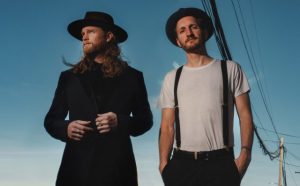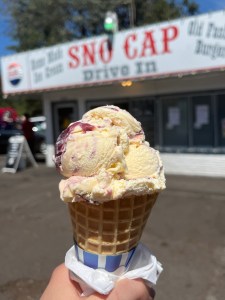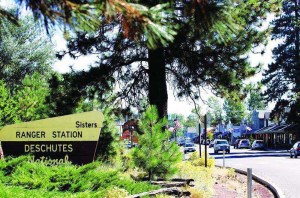Travel: A California literary pilgrimage
Published 11:56 pm Sunday, January 22, 2017

- Tor House, poet Robinson Jeffers peaceful Carmel estate, was hand-built in 1919 of locally quarried stone. Jeffers lived here for 43 years and also constructed the castle-like, four-story Hawk Tower for his wife, Una. (Barb Gonzalez / For The Bulletin)
SALINAS, Calif. —
John Steinbeck was born and raised in this central California city, but he was never particularly well loved in his hometown.
Trending
His books hit a little too close to home. “In Dubious Battle,” “Of Mice and Men” and “The Grapes of Wrath” tackled the social challenges faced by Depression-era laborers, raising awareness of how they were ruthlessly exploited by wealthy farm owners. His sympathy for socialist principles led him to be labeled as subversive and unpatriotic.
“East of Eden” placed his own maternal ancestors in the heart of a story that was based upon the biblical Cain and Abel, airing dirty laundry and describing the central valley in all its gritty reality. “Cannery Row” was a less incisive but more sentimental treatment of the workers and vagrants and prostitutes who lived among the sardine businesses that lined the Monterey waterfront in the 1940s, a face of their town that locals didn’t want to acknowledge.
Other books, including “Tortilla Flat,” “The Red Pony,” “Sea of Cortez,” “The Pearl” and “Travels with Charley,” may not have been as commercially impactful, but they reflected his affection for Mexican culture, his concern about American consumerism and his strong environmental ethic, enhanced by his longtime friendship with marine biologist Ed Ricketts.
Times have changed, however, and today, nearly 50 years after his death, Steinbeck (1902-1968) — who won both the Pulitzer Prize for fiction and the Nobel Prize for literature — is honored if not exalted in Salinas and Monterey. He is buried in a family plot in Salinas’ Garden of Memories Cemetery, and the National Steinbeck Center, in the heart of this rural city of 150,000, is a place of pilgrimage for lovers of classic American literature.
Steinbeck is one of numerous acclaimed authors with ties to the California coast or its hinterlands. Novelists Jack London and Henry Miller, playwright Eugene O’Neill and poet Robinson Jeffers had homes here, as did prolific writer and environmentalist icon John Muir. Robert Louis Stevenson spent some of the most important months of his life in Monterey and the upper Napa Valley between 1876 and 1880.
Numerous national, state and locally designated sites are dedicated to the memories of these authors. It isn’t difficult to trace a trail to visit these memorials, even without pausing in San Francisco, where many other noted writers made their homes.
Trending
Steinbeck country
Fans of Steinbeck may start their exploration of the author’s life at the National Steinbeck Center, established in 1998 and now headed by Susan Shillinglaw, one of the world’s leading scholars on Steinbeck and his works.
One half of the building (shared with California State University, Monterey Bay) is fully devoted to Steinbeck. Displays begin with his childhood in Salinas and continue through his early education and travels, including his marriages and children. The space is dominated, however, by exhibits describing the inspiration for his major books, which such artifacts as the GMC pickup that he drove around the United States in 1960 for “Travels with Charley.”
Numerous Steinbeck novels were adapted into films, some with his own screenplays. Clips of several are shown here; they may include “Of Mice and Men” (1939, starring Burgess Meredith), “The Grapes of Wrath” (1940, Henry Fonda) and “East of Eden” (1955, James Dean).
Two blocks north on Central Avenue, Steinbeck’s childhood home is preserved as the Steinbeck House Restaurant. After graduating from Salinas High School (where he was senior class president), the future writer attended Stanford University but dropped out to travel and write. Still, he returned home often, into the 1930s. The 15-room, Queen Anne-style Victorian was purchased in 1973 by the Valley Guild, a nonprofit women’s organization that continues to maintain it — offering tours and serving lunches Tuesday through Saturday.
Many sites related to Steinbeck’s novels are located throughout Monterey County, but none stands out so much as the Pacific Biological Laboratories, Ed “Doc” Ricketts’ lab-cum-men’s club on Cannery Row. Ricketts was Steinbeck’s closest friend from 1930 until his tragic death in 1948, and the wooden shack that now stands stern-to-bow with the modern InterContinental The Clement hotel preserves scores of memories from “Cannery Row,” “Sea of Cortez” and other works. The house has been owned by the City of Monterey since 1993
Monterey to Big Sur
Today a community of 30,000, Monterey was California’s earliest capital during its Spanish and Mexican eras. A presidio and mission were founded in 1770, with governmental functions established five years later. Today, Monterey State Historic Park protects dozens of 19th-century buildings, including the French Hotel, where a sickly Stevenson (1850-1894) stayed for several months in 1876 while wooing his wife-to-be, Fanny.
Exhibits include numerous artifacts from his time in Samoa, where he died of a cerebral hemorrhage and was buried at the age of 44. The harbor in Monterey may have inspired passages in “Treasure Island” and “Kidnapped,” according to manager of interpretation Michael Green.
There’s no doubt that Tor House, his seaside home, was a major influence in the work of poet Robinson Jeffers (1887-1962). Pennsylvanian by birth, he graduated from Occidental College in Los Angeles in 1905 and settled with his wife, Una, in Carmel in 1914. Five years later they moved with their two sons into the cottage Jeffers hand-built of locally quarried stone on an isolated granite outcrop, a “tor” in Celtic dialect. A few years later began work on the Gothic Hawk Tower, a four-story landmark he dedicated to Una.
Tor House was Jeffers’ home for 43 years. A master of narrative verse reminiscent of ancient Greek epics, he wrote unsentimentally about the natural world, which he embraced above civilization. He coined the term inhumanism to describe his philosophy — as expressed in “Carmel Point” — that man is too self-centered to embrace the “astonishing beauty of things.” Featured on a 1932 cover of Time magazine and on a 1973 postage stamp, he is remembered locally as a champion of the environmental movement.
Jeffers didn’t live far from Henry Miller (1891-1980), who kept a residence in Big Sur from 1944 to 1963. Miller wrote the controversial “Tropic of Cancer” (1934) and “Tropic of Capricorn” (1939), both of which were published in France after they were banned in the United States; they became a major influence on Beat Generation writers, notably Jack Kerouac. Miller’s book “Big Sur and the Orange of Hieronymus Bosch” (1957) is a collection of stories about his life on this rugged coast.
Today, the Henry Miller Memorial Library honors his memory although Miller himself once insisted, “Only by living your own life to the full can you honor the memory of someone.” Especially active from May to October, the library hosts such events as lectures, concerts, film screenings and book signings, and it is a year-round community center for Big Sur residents.
East Bay
Playwright Eugene O’Neill (1888-1953) lived for only six years in his Tao House retreat, built in 1937 on a hilltop overlooking Danville, southeast of Oakland. But it was here that he produced some of the most famous works of his long career, including “The Iceman Cometh” (1940) and “Long Day’s Journey into Night” (1941) and “A Moon for the Misbegotten” (1943).
O’Neill had already won three Pulitzer Prizes for his earlier work, and he added a Nobel Prize for literature in 1936. But it was at his 158-acre Tao House ranch, overlooking the San Ramon Valley, that he found his greatest peace.
The residence took its name from O’Neill’s interest in Eastern thought and the passion for Asian art and design exhibited by his wife, Carlotta. She decorated Tao House in what she called “pseudo-Chinese” style. The pair lived there happily until 1943, when a degenerative disease robbed the playwright of his ability to work — about the same time he disowned his 18-year-old daughter from a previous marriage, Oona, for marrying 54-year-old Charlie Chaplin.
The house today is a national historic site administered by the National Park Service. There’s no charge to visit, but it can be approached only by shuttles, which depart at designated hours, Wednesday through Sunday, from the Museum of the San Ramon Valley in Danville.
The home of John Muir (1838-1914) is also a national historic site. The father of the national park and national forest systems, Muir was born in Scotland and raised from childhood in Wisconsin. He was inspired to study botany and geology in his 20s. He was not yet 30 when he began to travel extensively and write for national magazines, work that helped to create Yosemite, Mount Rainier and Glacier Bay national parks. In 1892, he helped to found and became the first president of the Sierra Club.
When Muir married Louisa Strentzel in 1880, he became part of a prominent Bay Area fruit-ranching family. For more than half of the succeeding decade, he devoted his full energies to turning a handsome profit from pears, grapes and more orchard produce. But he returned to conservation writing in 1888, scribing a dozen books before his death at age 75.
The Italianate house where Muir raised two daughters was built of redwood in 1882 by his father-in-law, Dr. John Strentzel. It stood among 2,600 acres of farmland in Martinez, just south of the Carquinez Strait, where the Sacramento River enters San Francisco Bay. Today the 17-room mansion is the heart of a visit to John Muir National Historic Site. Indeed, the self-described scribble den where Muir wrote is maintained as it might have looked in the early 20th century, when the writer gazed out his window at his beloved trees.
Wallace Stegner (1909-1993) was another champion of the environment who lived in the Bay Area. Although there’s no site devoted to his life, he lived for more than 30 years in the Los Altos Hills near Stanford University, where he founded the creative writing program. Among his students were Edward Abbey, Thomas McGuane, Ken Kesey and Larry McMurtry. Stegner’s novel “Angle of Repose” won a Pulitzer in 1972. The Los Altos History Museum has no permanent exhibit on Stegner’s life, but it has mounted exhibits in the past, and can share ample information on the author for visitors with a special interest.
Stevenson and London
The intrepid Robert Louis Stevenson, upon having won the heart of Fanny (they married in San Francisco in 1880), retreated with his new bride to Calistoga, a hot-springs town at the head of the Napa Valley. They stayed for a short time in a cabin owned by newspaper publisher and town founder Sam Brannan, but as budget travelers they couldn’t afford the rent. So they moved into an abandoned cabin at a derelict mining camp on Mount St. Helena, overlooking the town, and spent two summer months enjhboying an unconventional honeymoon that became the basis for Stevenson’s book, “Silverado Squatters.”
There remain no traces of the cabin, although the 4,342-foot mountain itself is now the centerpiece of Robert Louis Stevenson State Park. A 5-mile trail off State Highway 29, between Calistoga and Middletown, climbs to the peak’s summit. In the town of St. Helena, 7 miles south of Calistoga, the Silverado Museum has an extensive collection on Stevenson, including his books (such as “The Strange Case of Dr. Jekyll and Mr. Hyde”) and personal artifacts.
To the contrary, there is plenty of evidence today of Jack London’s residence in nearby Sonoma County — enough so that Jack London State Historic Park, just uphill from the quaint village of Glen Ellen, is worth several hours’ visit. London lived here with his wife, Charmian, until his death in 1916.
Born in San Francisco and raised in Oakland, London (born 1876) worked a variety of jobs as a teenager. He was a cannery worker, a sailor, a common laborer and a transcontinental hobo. But he was devoted to reading and writing from the age of 10, and even as a pre-teen he could often be found studying diligently at Heinold’s First and Last Chance Saloon, a port-side bar that still stands in Jack London Square in downtown Oakland.
A hero of the working classes, London was 21 when he traveled to the Klondike Gold Rush in Canada’s Yukon Territory and returned to write three of his most famous novels: “The Call of the Wild” (1903), “The Sea Wolf” (1904) and “White Fang” (1906). He married Charmian in 1905, and purchased the 1,000-acre Sonoma estate that he dubbed Beauty Ranch.
He did not initially spend much time there, mounting a national lecture tour on socialism in 1906 and undertaking a trans-Pacific cruise to Hawaii and Australia with Charmian in 1907-09. But Beauty Ranch was the home to which they returned. Visitors today may visit their residential cottage, including the office where Jack wrote and Charmian edited, as well as ruins of a winery and farm buildings, a piggery and stone silos. More than 20 miles of hiking trails wind through the property today.
The Londons’ dream home, Wolf House, was in a sequoia grove about a mile east of the cottage. The author spent $80,000 — more than $2 million in current value — to build the 26-room stone mansion. Two weeks before the couple planned to move in, in 1913, it was destroyed by an unexplained fire. No attempt was made to rebuild, but the ruins remain today, a specter of what might once have been.
After Jack’s death, Charmian built her own house of stone, the “House of Happy Walls.” Here she lived until her death in 1955, after which it became a museum to her husband and to their exploits together. It’s a 0.6-mile hike from here to Wolf House, slightly less to the hilltop grave they share beneath a nearby boulder.
— John Gottberg Anderson can be reached at janderson@bendbulletin.com.
Hearst Castle
Although he was not an author, it would be hard to deny William Randolph Hearst (1863-1951) recognition as a literary figure. The publisher of The San Francisco Examiner and The New York Journal, he built the nation’s largest media company, Hearst Communications, by employing sensationalism and tactics of “yellow journalism” to attract readership. Orson Welles’ acclaimed 1941 movie, “Citizen Kane,” was inspired by Hearst’s life.
The Hearst family owned a 240,000-acre ranch above San Simeon, at the south end of the Santa Lucia Range below Big Sur. After his mother’s death in 1919, Hearst hired famed San Francisco architect Julia Morgan to build a Mediterranean Revival estate on a hilltop. Their collaboration lasted until 1947. Hearst filled its rooms with art and antiques from his vast international collection, and used it to entertain presidents, prime ministers and scores of Hollywood stars.
A California state park since 1954 and a designated national historic landmark, the estate was opened to visitors in 1958. Surrounded by 127 acres of gardens, it has 56 bedrooms, 61 bathrooms and 19 sitting rooms, as well as indoor and outdoor swimming pools, tennis courts, a movie theater and what was once the world’s largest private zoo: Zebras and other African animals still roam the grounds.
Visitors approach Hearst Castle at a large visitor center beside State Highway 1. While waiting for tours to disembark — shuttle buses begin running about 9 a.m. daily — they may watch a 30-minute film about the construction of the mansion. So large is the Castle, three different $25 tours access different parts of the structure. Tours may be reserved as many as eight weeks in advance, and that’s a good idea in summer, when thousands visit each day.
—John Gottberg Anderson








